Chokecherry (
Prunus virginiana) is a beautiful, shade-tolerant native shrub or small tree. It can be planted along the edge of a woodland or in a mass or thicket along your property boundary for screening or privacy. Growing in a wide variety of soil types, except for heavy clay, chokecherry provides color in spring, with its large white flowers, and in fall, with its brilliant foliage that turns from green to gold, copper or maroon.
This native shrub helps feed birds in two ways: It is a larval host plant to many types of caterpillars — the primary food source for birds to feed their young — and it produces fruit sought by berry-eating songbirds in late summer. The spring flowers also offer forage for native bees.
Caution: Because parts of this plant can be poisonous, it should be used with caution around livestock.
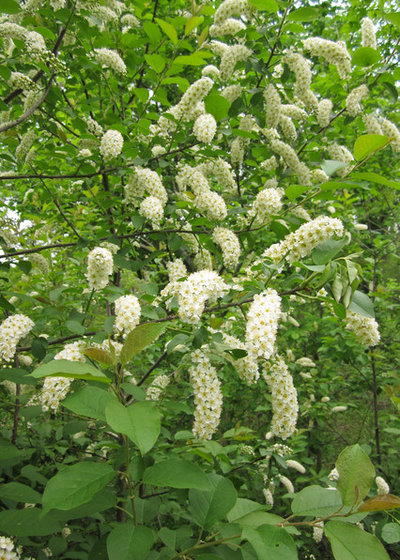
Holm Design & Consulting LLC
Botanical name: Prunus virginianaCommon name: Chokecherry
Origin: Native to North America from the west coast of Canada eastward to Maine and the Atlantic provinces in the north, and from Arizona and northern Texas eastward to North Carolina in the south.
Where it will grow: Hardy to minus 45 degrees Fahrenheit, or minus 42.8 degrees Celsius (USDA zones 2 to 8; find your zone)
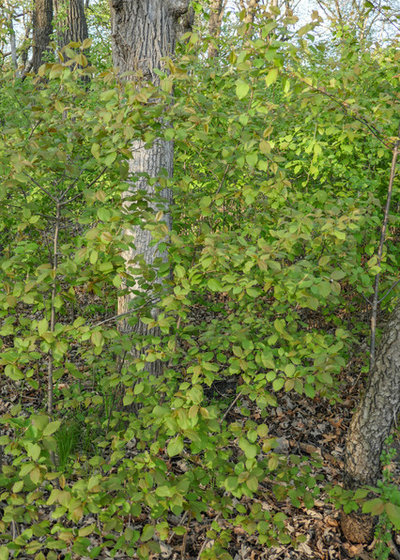
Holm Design & Consulting LLC
Typical plant communities: Woodland understory and woodland edges
Water requirement: Little to none once established
Light requirement: Shade to partial sun
Mature size: 15 to 30 feet tall and 8 feet wide
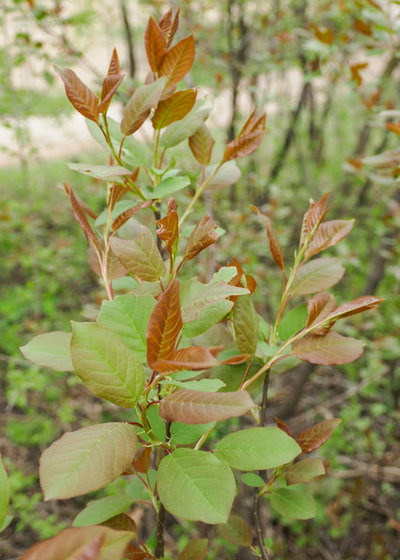
Holm Design & Consulting LLC
Benefits and tolerances: Tolerates most soil types and shade in the understory of mature deciduous trees
Seasonal interest: Maroon to copper leaves as they unfurl in spring; large flower racemes in May; gold, copper or burgundy fall color
When to plant: Spring or fall; potted plants available from most native-plant nurseries in areas where it occurs
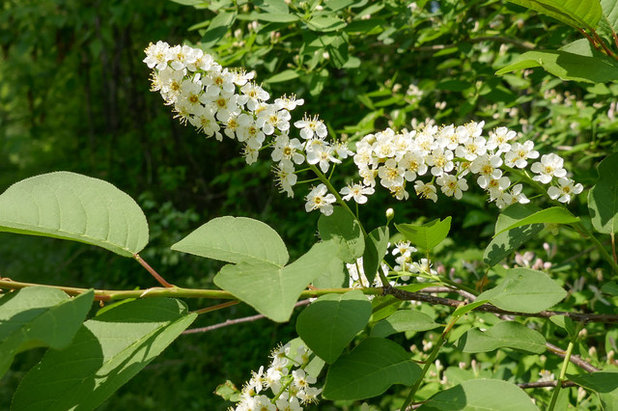
Holm Design & Consulting LLC
Distinguishing traits. Chokecherry has an upright form, bright green oval leaves, large white flowers in May and gold, copper or maroon fall color. Chokecherry spreads by rhizomes and naturally forms loose clusters or thickets.
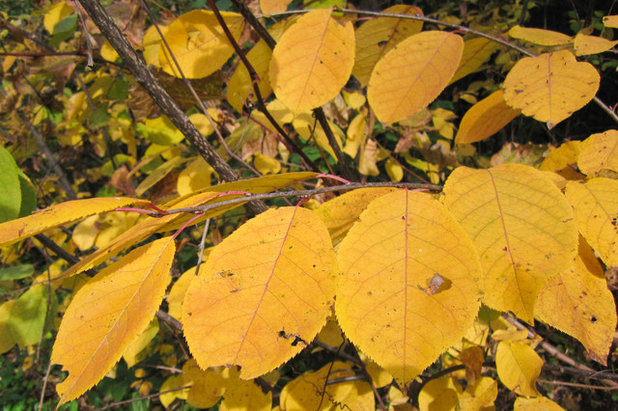
Holm Design & Consulting LLC
How to use it. Chokecherry is an excellent native shrub to use in the understory of a deciduous woodland or naturalized along the edge of a woodland. It has a similar form and shape to common buckthorn (
Rhamnus cathartica), an invasive woody shrub, and can be used as a replacement after buckthorn is removed from a woodland understory. This native shrub can tolerate, upland, dry to medium sites in partial shade.
Combine chokecherry with other shade-tolerant native shrubs, including American bladdernut (
Staphylea trifolia), downy arrowwood (
Viburnum rafinesquianum), nannyberry (
V. lentago) and red elderberry (
Sambucus racemosa).
Shown: Golden fall foliage
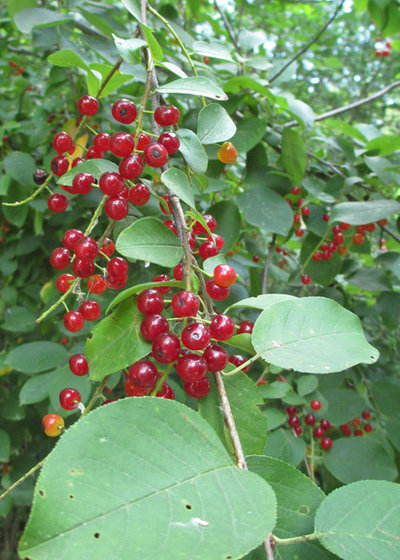
Holm Design & Consulting LLC
Planting notes. Chokecherry is rhizomatous and forms small thickets. It is an ideal shrub for many shrub-nesting birds. Plant in masses to provide screening along a property boundary and nesting habitat for birds. It prefers dry to mesic, sandy loam to clay-loam soil.
Chokecherry, like other plants in the
Prunus genus, is susceptible to black knot (
Dibotryon morbosum), a fungus that causes infection sites on a branch. The black swellings can be pruned in the winter below the infection point, bagged and disposed of in the garbage. If you are growing cultivated
Prunus fruit trees susceptible to black knot, avoid using chokecherry as an ornamental plant nearby.
Shown: The ripening berries are sought after by a number of songbirds in late summer.
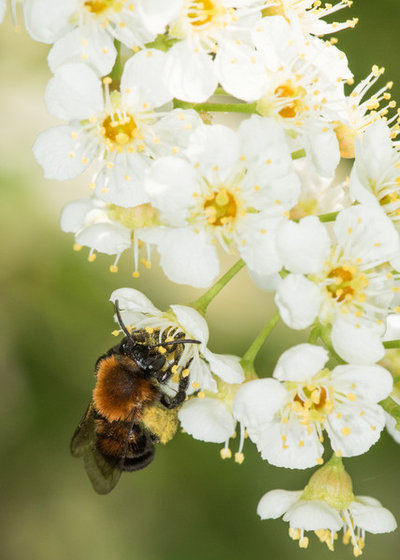
Holm Design & Consulting LLC
Pollinator notes. Chokecherry flowers are arranged in long, narrow racemes (similar to black cherry tree flowers). The flowers are favored by mining bees (
Andrena spp.), and a variety of species in the mining bee genus can be observed visiting the flowers.
Shown: A female mining bee





